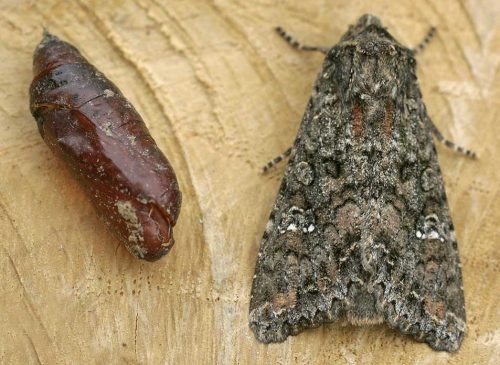Cabbage moth flies only at night and lays its eggs on the underside of leaves. Cabbage moths do a lot of damage on many plant species, including crucifers.
Cabbage moth (Mamestra brassicae). This moth flies only at night and lays its eggs (20 to 30) on the underside of leaves. After fourteen days, the eggs hatch. The caterpillars, more than four cm in size, eat the mesophyll from the leaf between the veins. They prefer young leaves in the heart of the plant. From August to October the caterpillars are active and and not only on cabbages, but also on many other plants, for example: lettuce, beets, hollyhocks, carnations, sunflowers, tomato, apple, pea, radish and rhubarb. They can do a lot of damage in a short period of time.
Where to find
- Vegetable plot among others:
- Cauliflower
- Kale
- Broccoli
- Pea
- Swede
- Red Cabbage
- Brussels sprouts
- Lettuce
- Kale
- Ornamental garden including:
- Carnations
- Sunflower
- Hollyhocks
Control
In the morning, check cabbages and other susceptible plants for eggs on the underside of the leaves. Remove leaves with eggs.
Spray with pyrethrum in the event of a true infestation.
Prevention
Check cabbages regularly for eggs and remove them. An insect-proof mesh protects the crop.
In greenhouse cultivation, provide the windows with insect netting, this will keep cabbage moths out.

